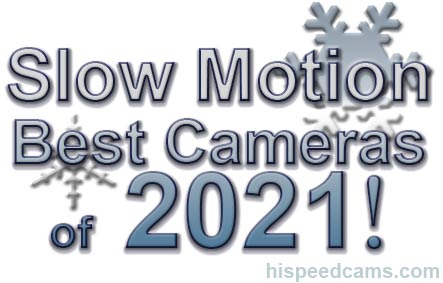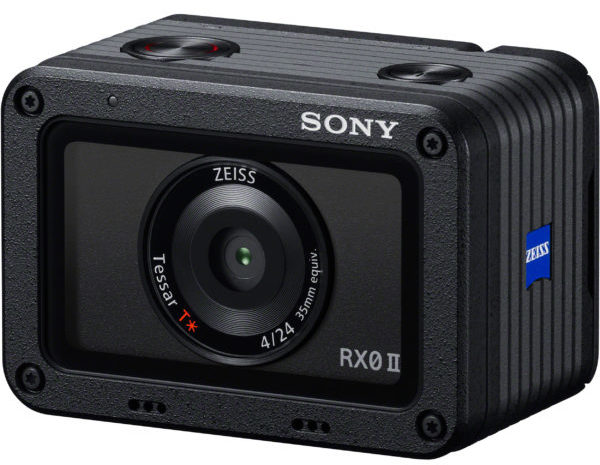As 2019 comes to a close its that time to take a look back through the year’s camera releases and see which delivered the goods at an affordable price in slow motion. Phone slow motion continues to be a strong category, so strong in fact that we made a Best Slow Motion Phones of 2019 list that you can see here.
Stagnation in many camera segments aside from phones is still ongoing, the semi-professional and pro markets stay at 120fps and 240fps with the occasional 320fps camera that delivers just a tad better quality but at a price. For professional slow motion, there were announcements but not a shipping product yet, however previously released cameras like the Chronos 1.4c and edgertronic still own the affordable quality market. Read on for our best of 2019 results!
BEST SLOW MOTION CAMERAS of 2019:
Without further ado here are what we believe are the best value slow motion cameras in their respective categories for the year 2019:
Best Slow Motion Phone Category:
We had 5 finalists for slow motion phone of 2019 and while the Mate 30 Pro below got the top marks, the iPhone 11 and OnePlus 7 series had great showings, go to the dedicated article for the rest of the phone options.
Huawei Mate 30 Pro:
Coming out of left field from a company that has been in the news as being in trouble with the US government, the Huawei Mate 30 Pro which is not shipping in the US officially but can be found from online import sellers, is the slow motion phone champ of 2019.
Huawei Mate 30 Pro Slow Motion Specs Dissected:
- 120fps 1080p Continuous
- 240fps 1080p Continuous
- 960fps 1080p for 1 full second (960 frames in total)
- 1920fps 720p for 1/2 second (960 frames in total)
- 7680fps 720p interpolated 4x (lasts for 32 seconds on a 30p timeline.)
- All super slow motion modes at 960p and above last 32 seconds of playback at 30fps regular speed.
- The entire buffer for the slow motion feature is 2GB and gets filled by data then dumped and encoded on the fly by the Kirin 990 chip.
This is the first phone that truly records 1920fps slow motion in 720p mode for 1/2 a second or 960 frames and then does excellent interpolation to a whopping 7,680fps 720p to create mind-bending images. It is especially good for people, animals, and hard non-deformable objects. It will of curse fail as any algorithm with fluids, powders, and heavily detailed objects and will create a soft mushy in-between frame in those cases. If you do not choose interpolation mode then you can get real slow motion for up to 32 seconds of playback on a 30p timeline which is excellent for a phone.
If you decide to buy it, the phone has a few issues to keep in mind. Due to US government restrictions, it will not ship with a full version of Android with the Google Apps and not have access to the Playstore. However several workarounds have been worked out in forums to make this phone usable. The other is that it is a Chinese phone which may need you to get help from someone who understands/reads Chinese to make the setup and get to work in English after. We do not recommend this phone as your main handset as the support of updates will probably be negated in the US but if you are in China, this is a great flagship phone. If you are outside of China, make sure you can live with the limitations in the software.
960fps,1920fps and 7680fps test – Huawei Mate 30 Pro incredible Slow Motion by Slow Experiment:
As you can see from the sample above and these other samples at HSC, the quality is quite good and the time is usable easily as a sports and experimentation high speed mode. It will of course not replace a dedicated slow motion camera for quality work but it is still an amazing development to get real 1920fps 720p and 960fps 1080p even with some artifacts in a portable device.
Huawei may be in hot water with the US government for some time but they have consistently delivered amazing hardware that is probably the cutting edge worldwide. We are excited about the future of phone slow motion and considering the giant leap that happened here, it is not unrealistic to think that really good 1080p 2,000fps or similar could be very close. At least for a small-time recording but it will really be magical.
Huawei has made an incredible slow motion phone on the Mate 30 Pro and if they read this, send a handset our way to test and offer samples of reference. As of now, their new handset is the one to beat. -HSC
Mid Range Professional Cameras:
This year the semi-pro camera market had some very good surprises when it comes to cameras that can shoot RAW files at very high quality and also allow for windowed slow motion modes.
Two of our picks are from Blackmagic design which is a known name in the affordable quality camera market. They have been able to deliver RAW and compressed RAW with BRAW format for very little investment compared to many other brands. The quality delivered by these cameras are really cinema-quality so the trade-offs when stepping down are more to do with changing a camera system for producers rather than giving up the footage grading ability or low light performance.
Third Place: URSA MINI PRO 4.6K G2
The URSA Mini Pro G2 had a firmware update mid-year that allowed for 300fps in a windowed 2k pixel mode that has great quality and can be stabilized for excellent 1080p production quality. For under $6k for body only the price is not that high for a camera that can really bring your production values up. It gets a third place because the cost of owning the camera goes up with accessories like media, lenses, batteries, monitoring, and storage for editing. A good kit can easily get in the 15k range. The BRAW format is excellent but not for everyone. ProRes is also a possibility and probably what many producers will shoot in when need to deliver in a rush.
High Speed Frame Rates on the URSA Mini G2:
Blackmagic RAW 8:1
4.6K Full – Up to 120 fps
UHD Windowed – Up to 150 fps
HD Windowed – Up to 300 fps
With 4k UHD at 150fps it makes for a killer feature rarely available on other cameras and the 300fps in HD or 2k allows for that extra oomph within your creative shoot.
300fps UMP G2 test 190629 by Reel Eagle Studios: → Continue Reading Full Post ←




